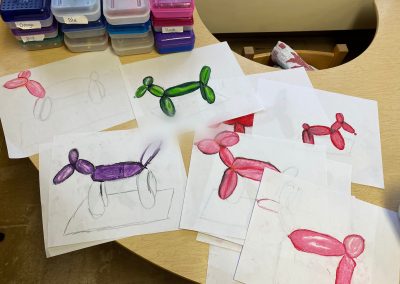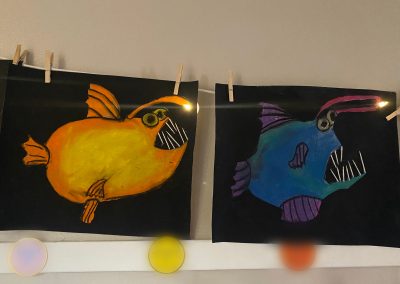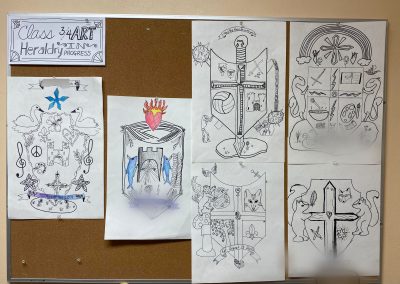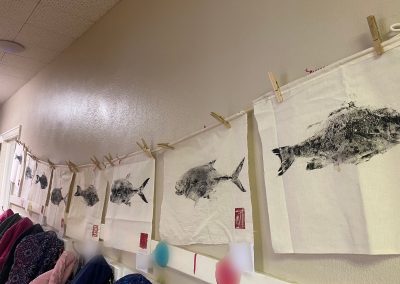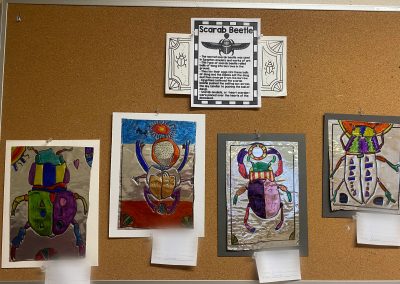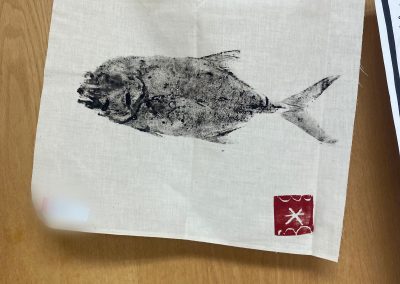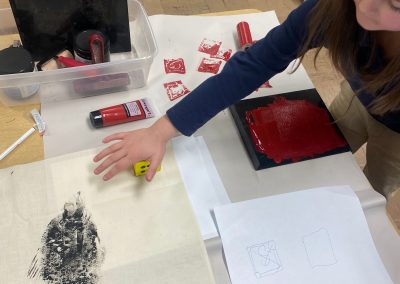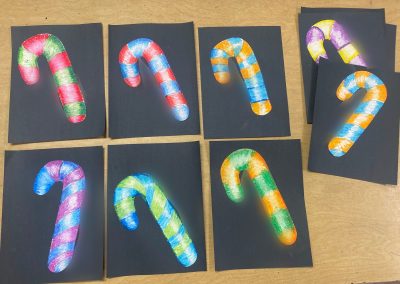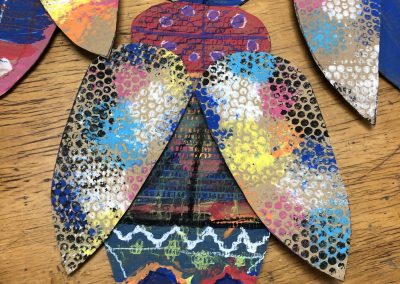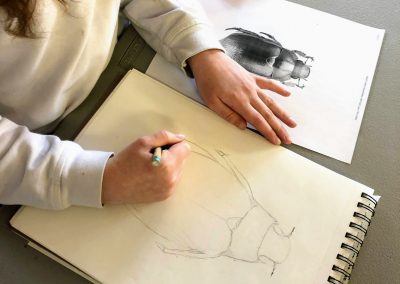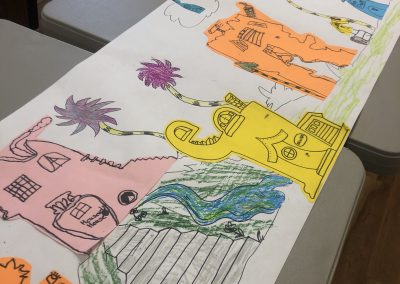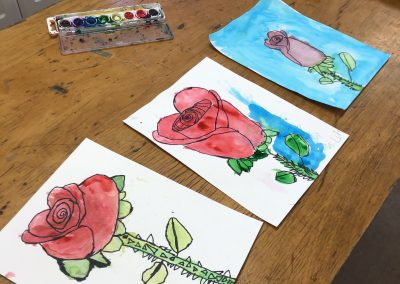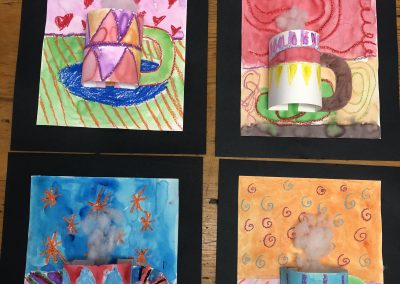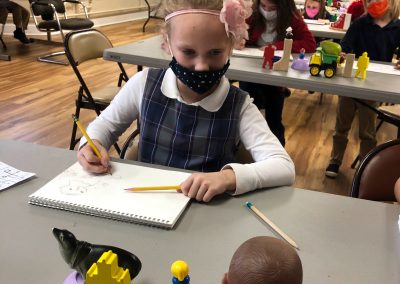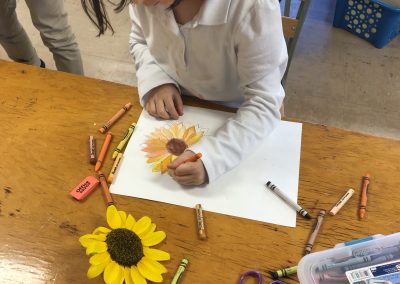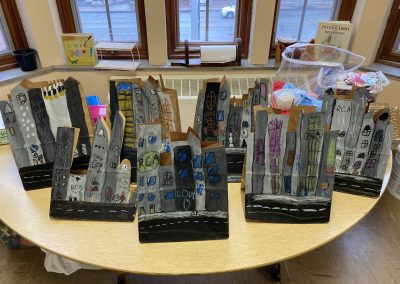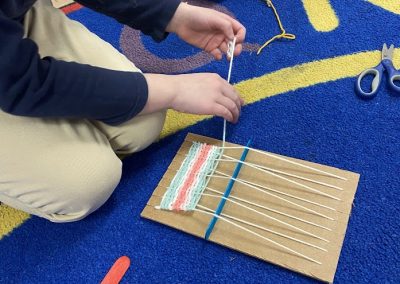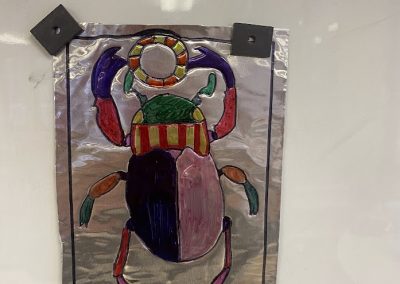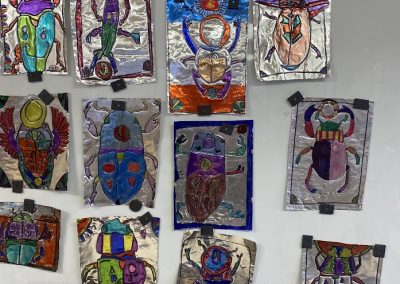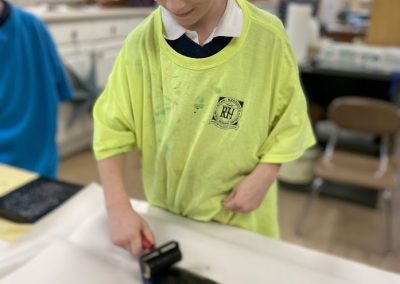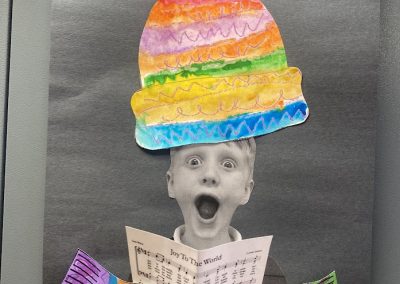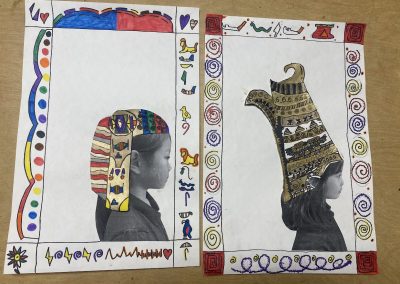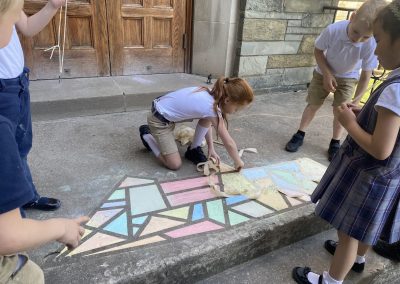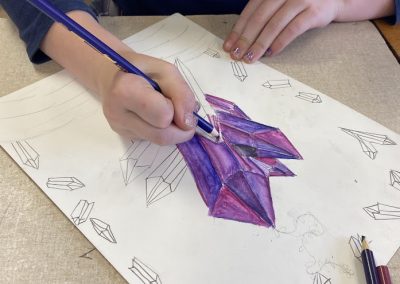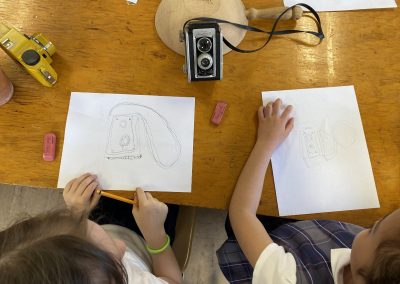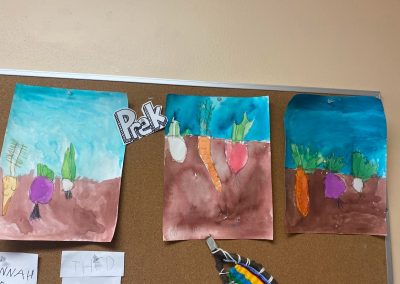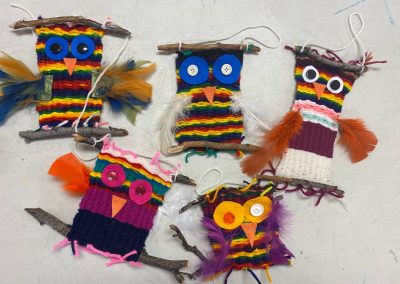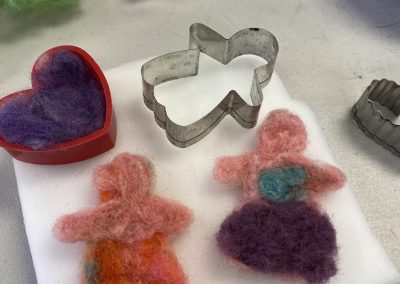Art at RCA
From Specials to Essentials
At RCA, we believe that creativity is present in every human because we all bear the Imago Dei, the image of God. As a classical school, we believe that the work of education is to take God-given abilities and develop them, whether they are academic, physical, spiritual, moral, or artistic. Therefore, we have a robust art program so that we can develop the artistic abilities of every student and show them how to create with beauty, style, and technique.
It is common in our educational culture for art to be considered a “special,” an extra subject given time only after other subjects take priority. By contrast, we believe that artistry is a gift to be stewarded in every student, not neglected, disregarded or pigeonholed for only a select few. For us, art is essential.
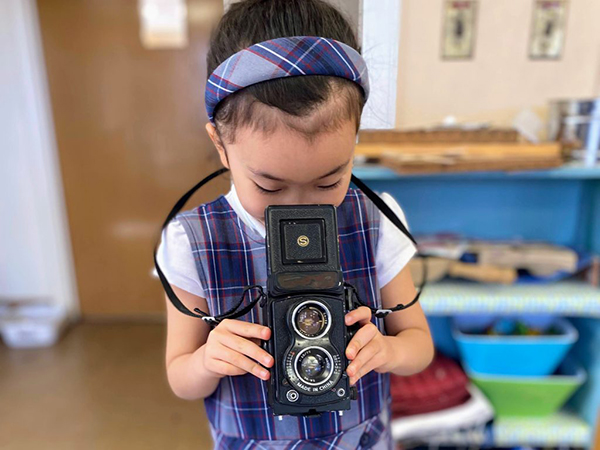
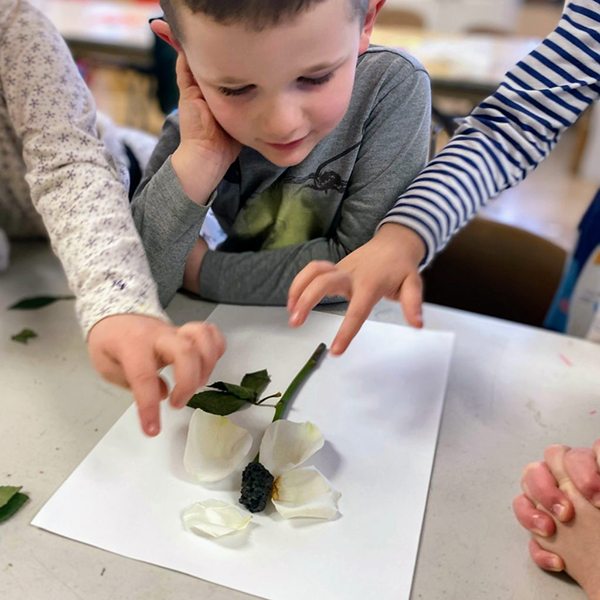
Teaching Students To Observe, Truly
At RCA, an ongoing component of our art curriculum is not centered on creating art at all, but on observing it. Using a process developed by Charlotte Mason, students are trained how to look carefully at objects in nature or observe famous works of art closely.
Our trained art teacher helps inform the seeing of the students without telling them what they should appreciate or interpret what the artist is saying. Over time students gain the ability to take in the details of a piece of art— line and shape, positive and negative space, light and shadow, movement and stasis—and synthesize these into understanding the work and even the style of an artist. Students are taken through this process alongside their art instruction so that over time they become expert observers, a skill which serves them throughout their lives.
Monart Method
At RCA, we believe that artistic skills can be taught to all students. Within our curriculum, we emphasize drawing because it is the foundation for all other visual media, from painting to graphic design to architecture.
Most young children have only seen the symbolic, stick-figure type drawings that they and their friends create but a more developed and representational style is possible, even at a young age. RCA has adopted the Monart Method, a drawing system that shows children how to perceive the visual world in terms of five basic shapes. With practice, they can identify them in any object and translate what they see onto paper. With practice, they are able to produce impressive drawings of anything they may observe, from insects to rocket ships to portraits of themselves.
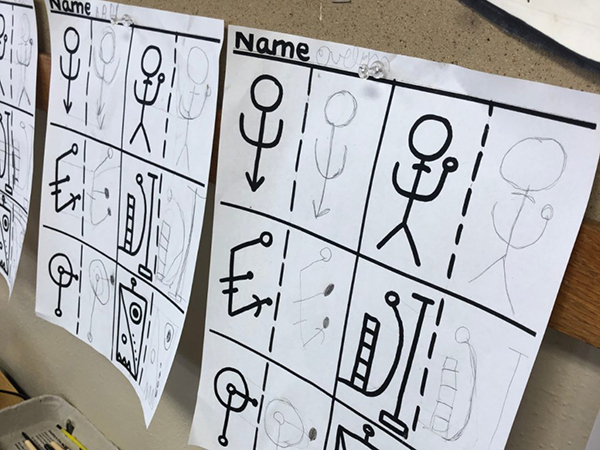
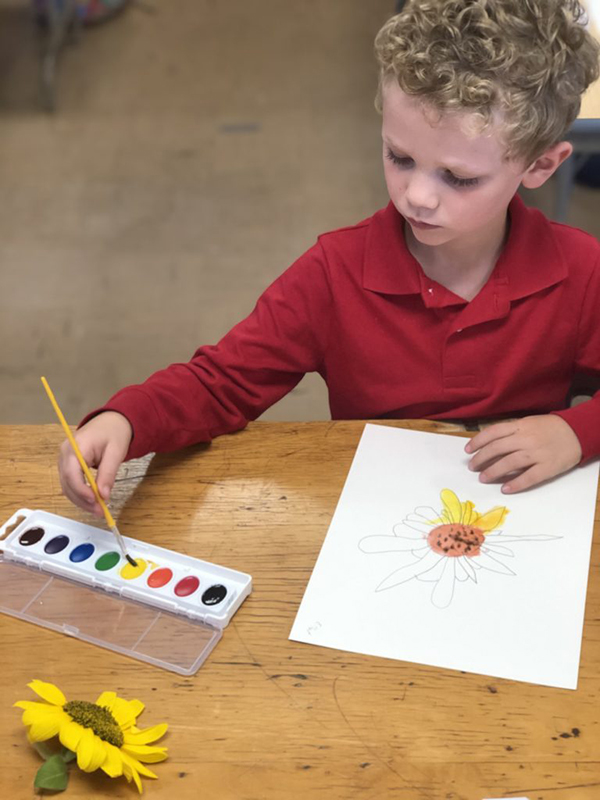
Imitation Leads to Creativity
At RCA, students draw from life and from their imaginations, but they also copy from other well-established works of art, a classical approach. The idea of imitating another artist runs counter to the contemporary value placed on self-expression and originality. Why look to someone else’s style when we can discover our own? Doesn’t imitating stifle creativity?
Historically, artistic training always included copying from a master. In The Craftsman’s Handbook, a how-to manual for aspiring painters, early Renaissance artist Cennino Cennini admonishes apprentices to imitate the style of a master closely and frequently. He says that if you copy from an excellent painter, “you will find, if nature has granted you any imagination at all, that you will eventually acquire a style individual to yourself, and it cannot help being good; because your hand and your mind, being always accustomed to gather flowers, would ill know how to pluck thorns.”
According to this view, it is through imitation, not in spite of it, we are able to develop our own style. Historically, nearly all artists – from Da Vinci to Velasquez to Sargent – imitated works of established masters as part of their training. Even artists who rejected traditional forms like Cezanne to Picasso were originally trained to draw representationally. Before he ventured into Cubism, Picasso could draw like Rembrandt. Michelangelo’s drawings after Giotto’s frescoes reminds us that that imitation need not stifle creativity and innovation.
Learning to draw requires discipline that, for a time, will limit free expression. But once the skill of seeing and drawing is mastered, the artist has a powerful tool that allows her the freedom to create whatever she wishes! Someone who never takes the time to learn the skill in a disciplined manner has no such freedom.
LEFT: Giotto, Ascension of John the Baptist (1315)
RIGHT: Michelangelo, after Giotto, (1490-92)

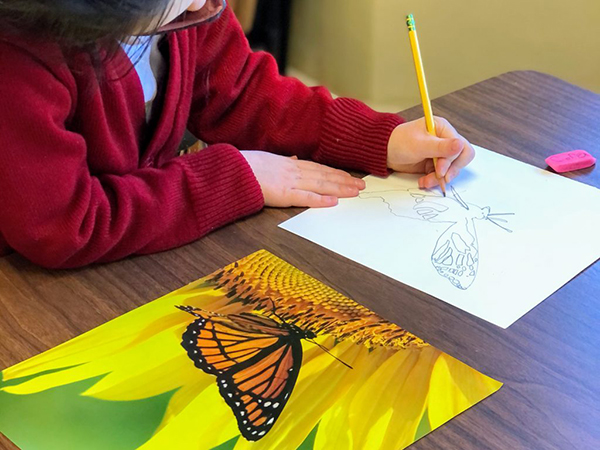
Integration Across Disciplines
At RCA, drawing abilities can be enjoyed and utilized in many subjects outside of art. For example, students can use drawing to visually document the parts of a flower in a nature journal. With a more nuanced understanding of shape and proportion, students can produce a convincing map of the world with greater ease. It is difficult to forget what we draw because it requires us to slow down and consider all the details that are otherwise overlooked. If we want to learn all the parts of something, there is no better way than to draw it.
Drawing is an intellectual and joyful activity that allows us to discover the intricacies and beauty of the world around us. Our goal at RCA is not necessarily to create more professional artists, but to equip students to observe attentively, think aesthetically, and value beauty…far beyond childhood.
Beyond Drawing
With a solid foundation of observing and drawing, our art program branches out into a variety of media and techniques. Our students work with paint, watercolor, clay, mosaic, and three-dimensional creations, just to name a few. They learn how to handle the medium of choice properly, how to bring its particular qualities to bear on their art, and how to create works that are truly beautiful, at any age.
It is our pleasure to show our students God’s fingerprints throughout the natural world, to send them out with the knowledge that they are sub-creators, and to steward their abilities to create beautiful works of art because that is part of what it means to bear the image of God.
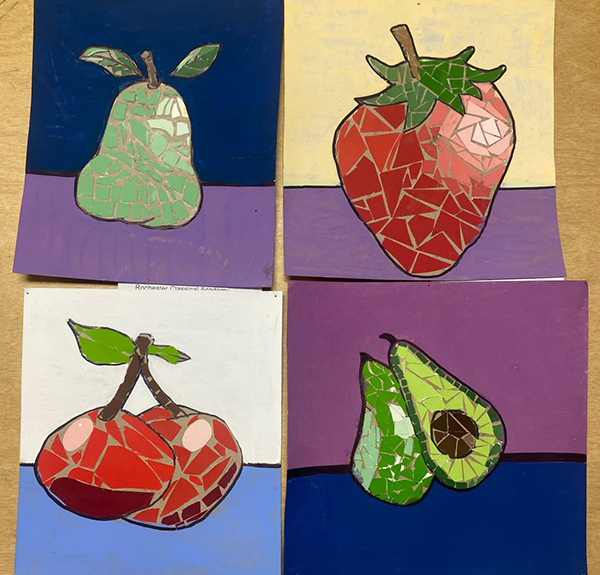
View Our Full Art Gallery
Please click pictures to see a larger version

